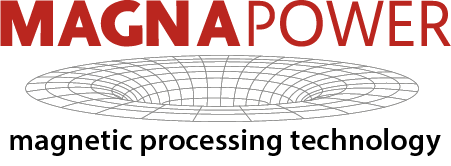- What is an Eddy Current Separator?
- How does an Eddy Current Separator work?
- What metals does an Eddy Current Separator separate?
- Why do some metals get thrown further than others by an Eddy Current Separator?
- Can ferrous metal be separated by an Eddy Current Separator?
- Do the amount of poles improve Eddy Current Separator performance?
- What is an Overband Magnet?
- How does an Overband Magnet work?
- What metals does an Overband Magnet separate?
- In-line or crossbelt overband?
- How is an overband magnet size selected?
What is an Eddy Current Separator?
An Eddy Current Separator is an industrial machine used to sort non-ferrous metals from non-metals. It is often used in the waste management and scrap metal industries for recovering metals such as aluminium, copper and brass.
How does an Eddy Current Separator work?
A rotor with high intensity magnetic poles rotates at high speed inside the head drum of the ECS conveyor. It induces a magnetic field into non-ferrous metals on the belt surface. These magnetically induced metals react with the magnetic field of the rotor causing them to be propelled further forward than the other material on the belt.
What metals does an Eddy Current Separator separate?
The Eddy Current Separator separates non-ferrous metals such as aluminium, copper, brass, zinc, magnesium.
Why do some metals get thrown further than others by an Eddy Current Separator?
This depends on conductivity, size and shape of the non-ferrous metals. Metals which are more conductive, lighter and larger will be thrown further than metals which are less conductive and smaller. Copper and aluminium have a high conductivity and so will tend to separate well with an ECS. Stainless steel is approximately on 5% as conductive as copper and so does not tend to separate well on an ECS.
Can ferrous metal be separated by an Eddy Current Separator?
Ferrous metal will be held by the magnetic field of the rotor and should discharge with the non-metals or behind the flow of non-metals. However, ferrous metal heats up rapidly on the ECS rotor and will cause wear and damage to the belt and then the rotor. It is strongly recommended that ferrous metal is removed prior to material reaching the ECS belt.
Do the amount of poles improve Eddy Current Separator performance?
There are several ECS design factors that change the ECS performance. The most important is magnetic intensity. Other factors frequency which is a product of number of poles and rotational speed. It is important to state that a rotor with the highest number of poles does not necessarily produce the highest separating force.
What is an Overband Magnet?
An overband magnet is an industrial machine used to sort ferrous metals from non-metals. It is often used in the waste management and scrap metal industries for recovering steel.
How does an Overband Magnet work?
Mixed material passes underneath the overband magnet. The magnetic field of the overband attracts ferrous metal towards the magnet face and the constantly rotating belt of the overband carries the extracted metal away from the magnet face. When the metal reaches past the end of the magnetic field it drops away from the cleaned material.
What metals does an Overband Magnet separate?
An overband magnet only separates magnetic ferrous metal such as mild steel. It won’t separate most stainless steel as it is non-magnetic.
In-line or crossbelt overband?
A cross belt overband magnet can be easier to fit across a conveyor and it may be more convenient to discharge ferrous metal to the side of a conveyor.
An in-line overband magnet tends to produce a cleaner ferrous metal and will usually have less belt wear than a crossbelt.
Overband magnets need to be positioned above a non-magnetic section of conveyor. This includes the head pulley of the conveyor if it is an in-line installation.
How is an overband magnet size selected?
This will depend on several factors such as the material size and type, burden depth and product conveyor width.
